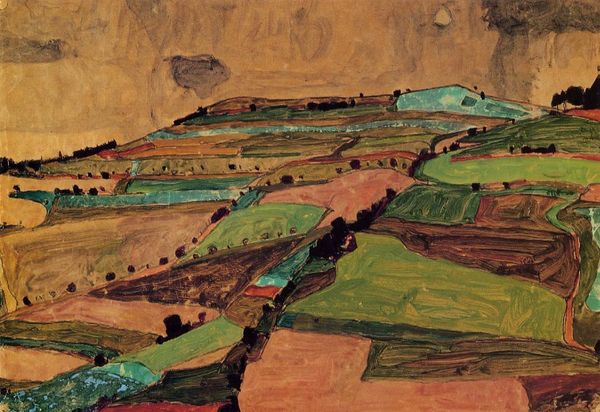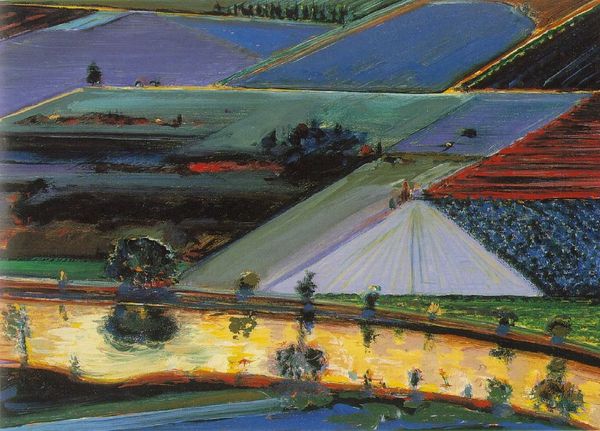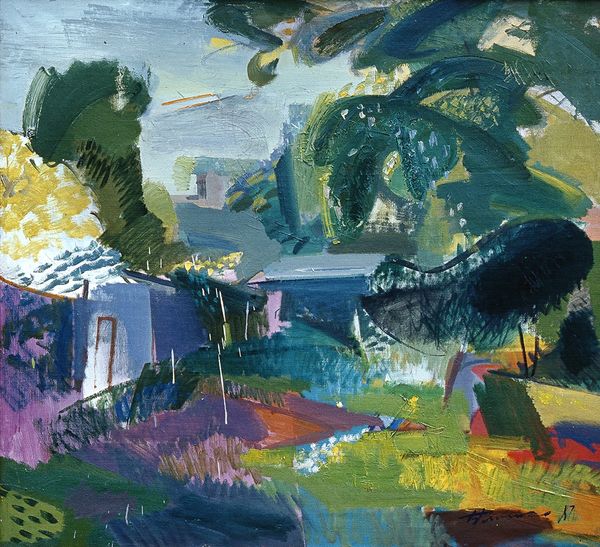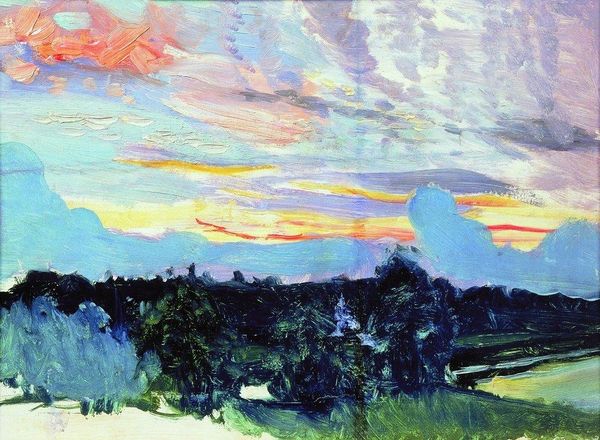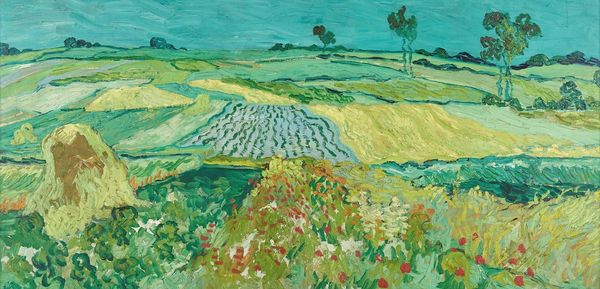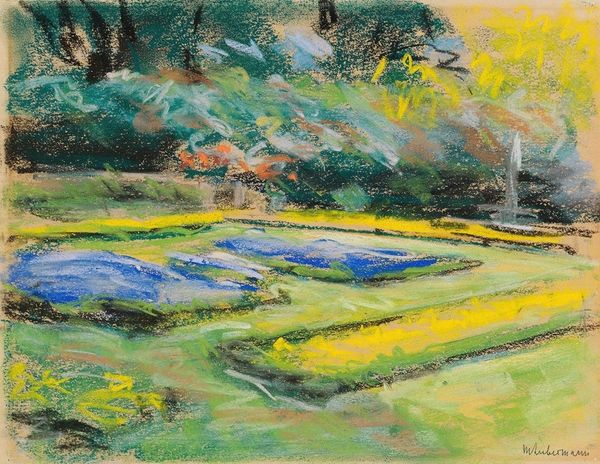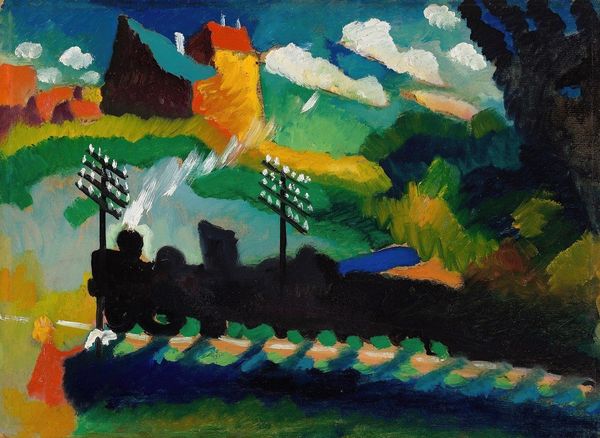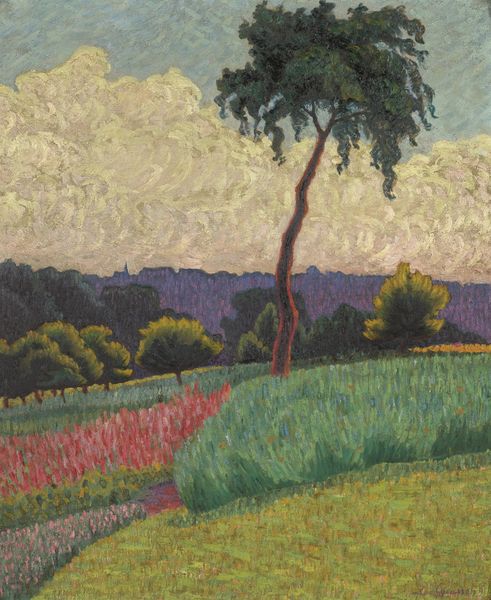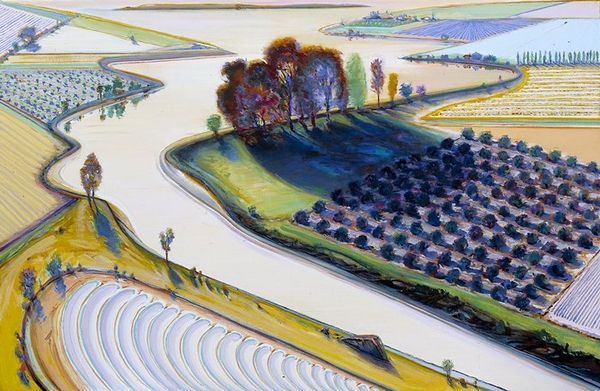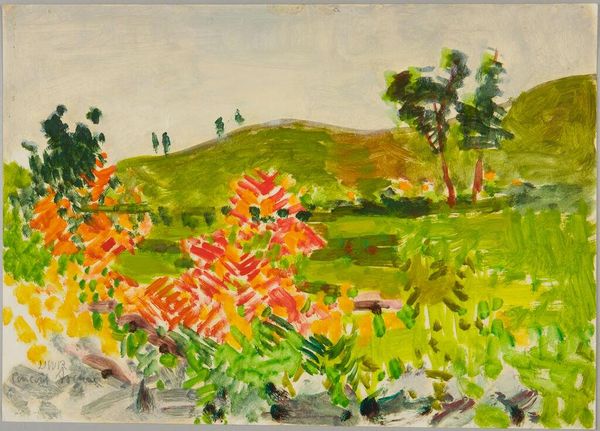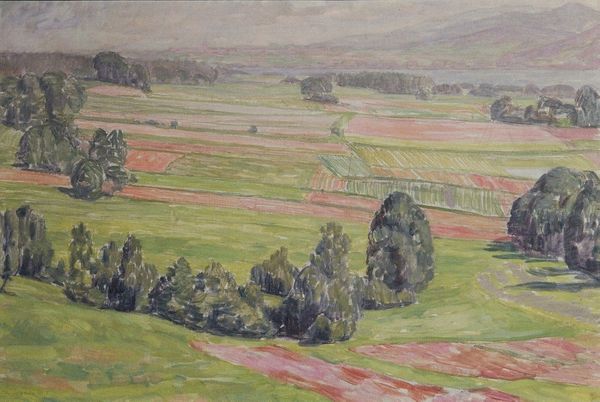
Copyright: Piroska Szanto,Fair Use
Editor: Piroska Szanto’s "Hillside," painted in 1944, is just exploding with vibrant color! It’s an oil painting, and the thick application of the paint gives it such a palpable texture. The landscape feels both familiar and a bit dreamlike. What stands out to you about this particular landscape? Curator: This is where symbols speak louder than geography. The seemingly naive presentation actually unlocks potent ideas. Hillside landscapes often serve as symbols of stability, heritage, and the connection between humanity and nature. In 1944, a painting of fertile land in Central Europe isn’t just pretty; it is a symbol of resilience and a deeply felt yearning. Consider what this image says about place during times of displacement and turmoil. Editor: That’s such a powerful point. So the hillside isn't just a hillside? Curator: Never. Consider how divided the composition appears. Fields neatly side-by-side. The colors are contained within lines. It presents order on the surface but I also wonder if this sense of forced, cultivated harmony echoes deeper cultural anxieties. The land remembers its caretakers, whether they are visible or not. What feelings does the painting elicit from you? Editor: I hadn’t really considered the idea of ‘forced harmony’ before, but now that you mention it, it resonates deeply. The image is bright, but maybe with the knowledge of what was happening when it was painted it is also tinged with sadness. Curator: Absolutely. The land endures as an emblem of perseverance. Editor: Thank you. This has really deepened my appreciation for how symbolic a seemingly straightforward landscape painting can be.
Comments
No comments
Be the first to comment and join the conversation on the ultimate creative platform.
